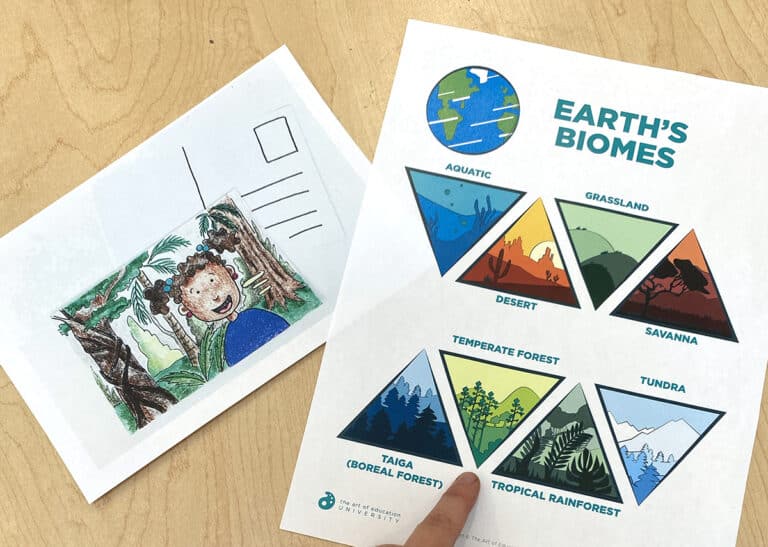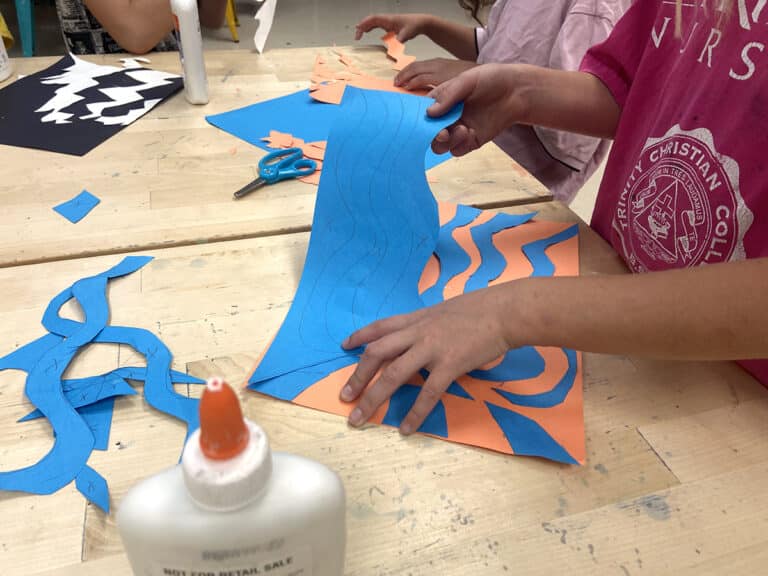It’s the end-of-term rush and your desk is buried in artwork to grade. Planning time flew by as you prepped materials, responded to emails, and took a phone call. You’re swamped! After the final bell rings, you stop by your favorite gallery on the way home to decompress. The moment you step inside, your breath slows, and a wave of calm washes over you.
As art teachers, we know the power of the visual arts to connect and move people. Now, science is proving what we’ve understood all along! The field of neuroaesthetics is showing how art can improve emotional well-being.
Let’s explore how to harness neuroaesthetics through service learning in the art room to improve health and quality of life.

What is neuroaesthetics?
Neuroaesthetics is the study of how our brains respond to art. When we look at art, parts of our brains light up! These parts handle emotion, senses, and pleasure and release dopamine, which makes us feel good and reduces stress. Susan Magsamen explores how creating and viewing art can help people in her book called This Is Your Brain on Art.
In hospitals and nursing homes, art can be a positive distraction. It helps people focus on something calming. A study of burn victims found that looking at pleasant images reduced their pain. This shows that art doesn’t just fill a space—it makes people feel better! Understanding how art affects the brain enables us to see the full power and potential of student artwork. Use this science as part of a service learning project to bring art and positivity to others in the community.
Bring the power of neuroaesthetics into your classroom and community with these ideas!
Compare and contrast two artworks to capture emotional responses.
To introduce students to neuroaesthetics, compare two very different artworks. The Scream by Edvard Munch and Water Lilies by Claude Monet are great examples to start with! These paintings show how art can prompt different emotions. The Scream often makes viewers feel tense or anxious, with the subject’s intense facial expression and the artist’s use of bold colors and swirling lines.
In contrast, Water Lilies creates a sense of calm through soft, subdued colors and flowing shapes. Talk with students about how each piece affects their mood. Ask them to think about how the elements of art contribute to the mood. Segue into how creating and sharing calming art can bring tranquility to others, especially those who are sad or struggling.

Create calm with color field artists.
Research shows that certain colors can boost our well-being. Non-objective art, especially by Color Field artists like Wassily Kandinsky and Helen Frankenthaler, is ideal for this activity. The large-scale artworks with big splashes of color are a great introduction to color symbolism.
Introduce Color Field artists and how they used color to convey emotion without recognizable subject matter. Reinforce color theory, focus on mixing tertiary colors, and explore blending. Lead a guided visualization by asking, “What colors make you feel calm? Are they cool or warm? Saturated or muted?” Students paint a non-objective piece, using color to evoke calm. Experiment with materials like squeegees, rollers, and sponges for blending.
If you’re looking for resources to scaffold this process but don’t have time to create your own, check out FLEX Curriculum. FLEX is a standards-aligned curriculum with a vast archive of lesson plans and student-facing resources. Use worksheets like Showing Emotion: A Formative Tool and Discussion: Colors and Feelings to guide students in exploring emotions through color.
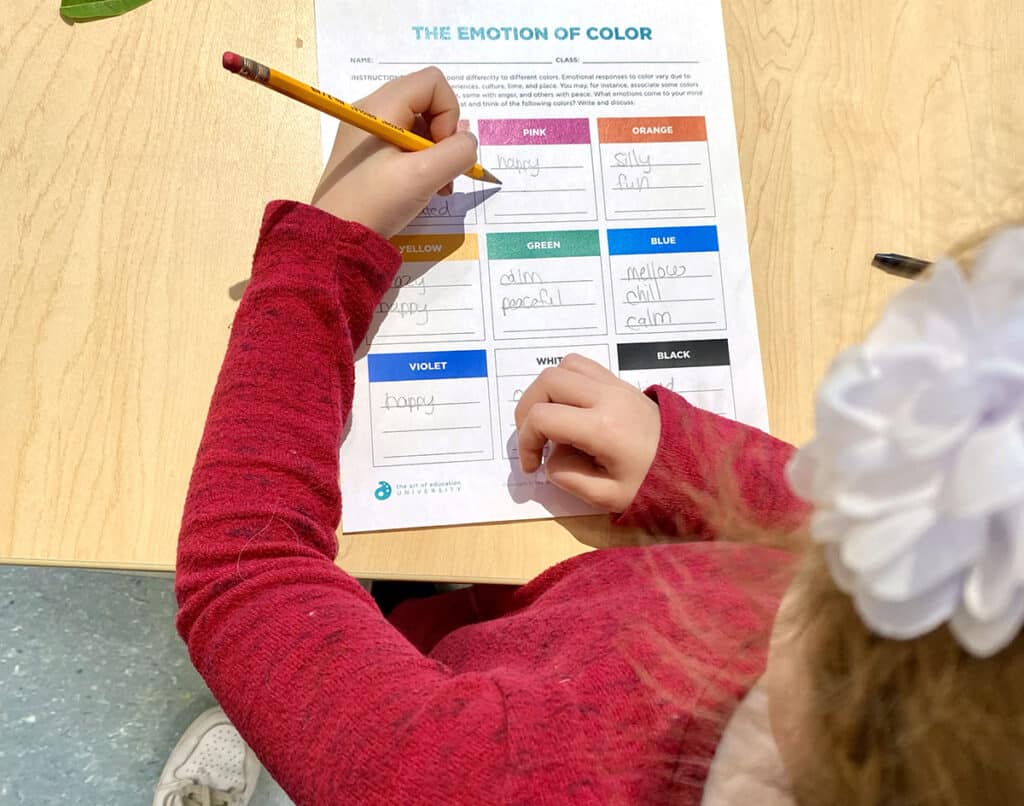
Visualize positive themes through hand lettering.
Ask students to list positive themes like hope, peace, love, and kindness. By transforming these abstract ideas into hand-lettered art, students see how art can inspire. Read Ish by Peter H. Reynolds to encourage students to embrace abstract art and capture their theme’s essence.
Students choose a positive theme and reflect on how to represent it visually. Ask questions like, “If kindness were a color, what would it be? If hope were lines, what type would it be? If peace were a texture, how would it feel?” to guide their visualization. Discuss text in art and the importance of different font styles and sizes. Practice various words and quotes with step-by-step hand-lettering directions and drills. After sketching different word and composition combinations, choose a favorite to turn into a final artwork with markers and paint.
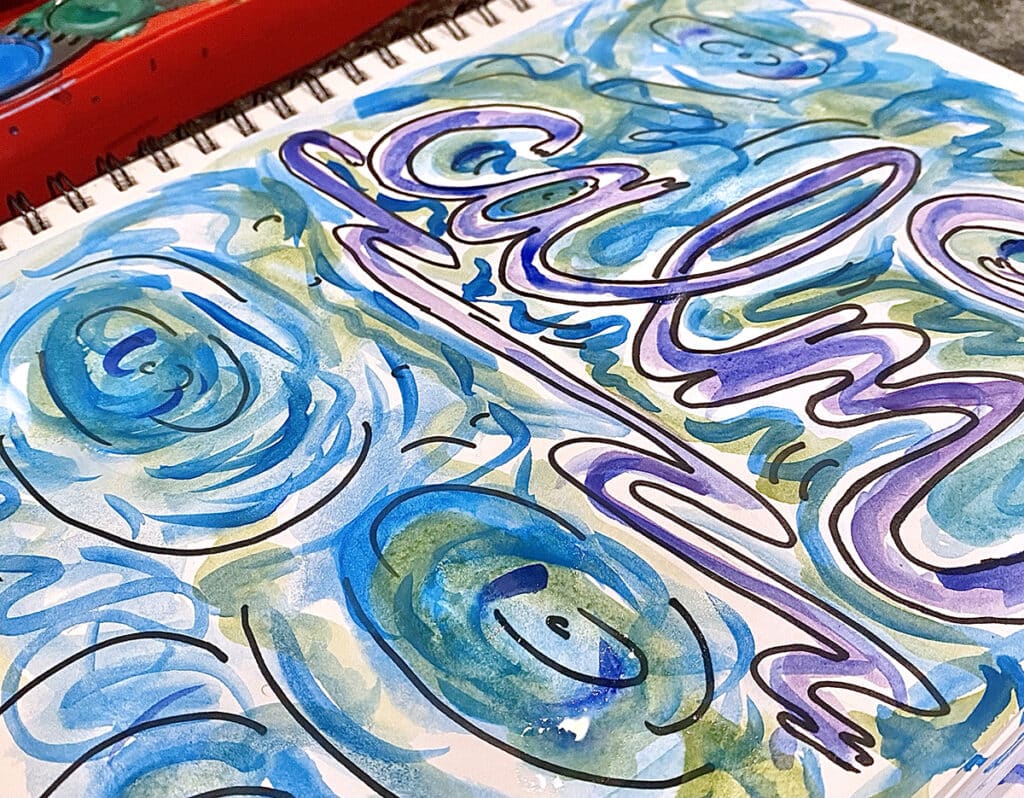
Share art in community spaces to positively transform well-being.
Once students create their artwork, it’s time to share it with the community! Brainstorm a list of places with your students that could benefit from calming artwork.
Here are some community space ideas to include:
- Hospitals
- Nursing Homes
- Shelters
- Rehab Facilities
- Veterans’ Centers
- Hospice Centers
- Assisted Living Facilities
- Mental Health Clinics
- Libraries
Reach out to venues via email and share your plan for displaying calming art. Discuss details about the space and display and how long the artwork will be up. Consider easy-hang options like using butcher paper for quick setup or pre-matting the pieces for a polished look. Coordinate with the venue to choose the best method.
For more innovative and time-saving ways to display student artwork, check out the following tips:
- Art Room Hacks: New Ways to Display Artwork
- 7 Nifty Ideas for Storing, Hanging, and Displaying Artwork
- How to Select Art Show Artwork and The Best Adhesives to Hang Art
Invite students and families to visit the exhibit by emailing home or including it in the school newsletter. Provide a box, blank cards, and pens for visitors to write letters to the students about how the artwork made them feel. This reinforces the value of the students’ work and highlights the impact of visual art.
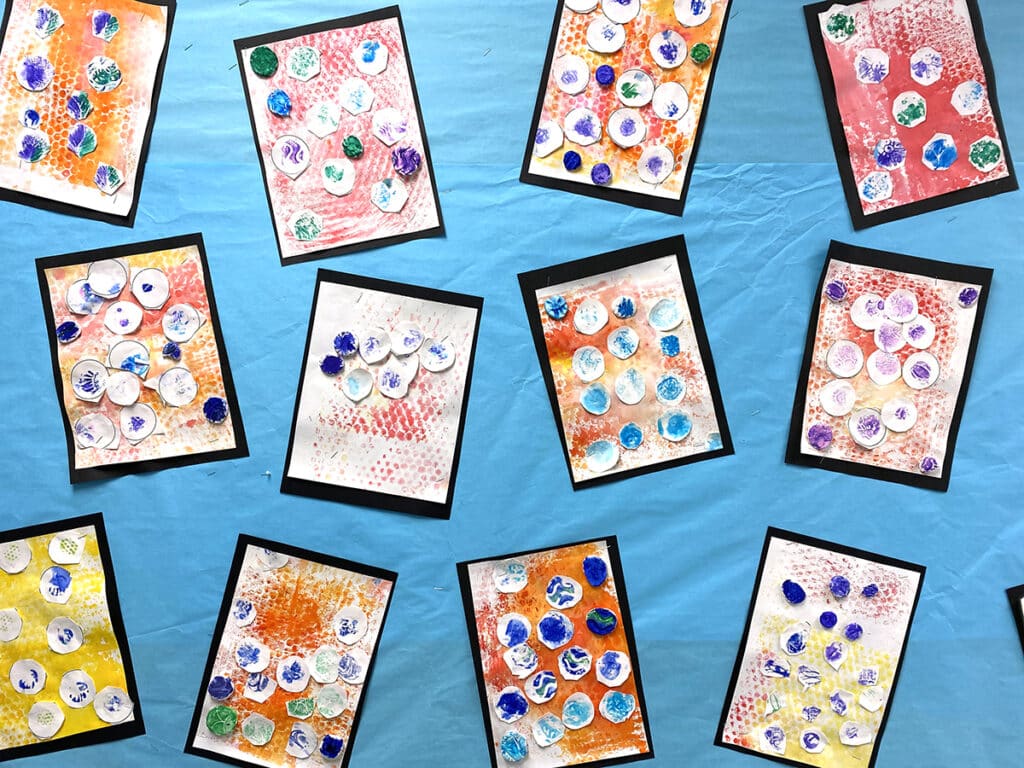
Service learning helps students see how their art can make a difference. Creating art for therapeutic spaces boosts creativity and teaches students the emotional power of their work. By placing hand-lettered quotes or giant color field paintings in hospitals or shelters, students bring calm and comfort to those in need. It shows that art connects us and supports others beyond the classroom. Art-based service learning gives students purpose and shows how their artistic efforts can help the community.
How do you guide your students to think about the emotional impact of their work?
What are your favorite ways to incorporate service learning projects in the art room?
To continue the conversation, join us in The Art of Ed Community!
Magazine articles and podcasts are opinions of professional education contributors and do not necessarily represent the position of the Art of Education University (AOEU) or its academic offerings. Contributors use terms in the way they are most often talked about in the scope of their educational experiences.



